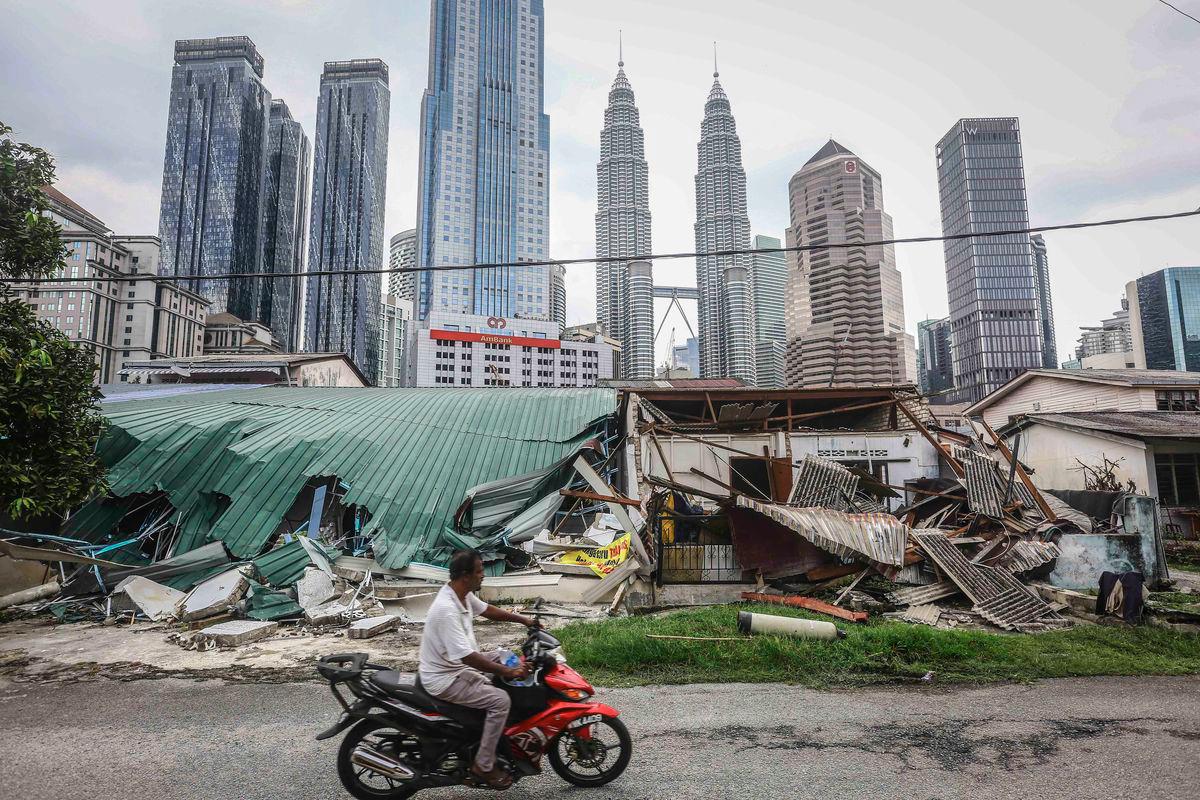PETALING JAYA: Universiti Teknologi Malaysia property economics and finance associate professor Dr Muhammad Najib Razali said the redevelopment of Kampung Sungai Baru is not a land grab or an eviction but a blueprint for progress.
He said the project could give residents improved homes, better assets, modern infrastructure and wider economic opportunities, while preserving the cultural identity of the area.
He added that the prized land in central Kuala Lumpur has been underutilised for decades, with ageing homes occupying a location of immense value.
“The existing houses, many built generations ago, are an inefficient use of such prime land.
“The approved high-rise mixed development would unlock greater value by consolidating fragmented parcels into one integrated project, with modern apartments, commercial spaces and community facilities, supported by upgraded roads, utilities and public spaces that benefit both residents and the city.”
He said the project is not about uprooting communities but about reshaping Kuala Lumpur into a more sustainable and liveable hub.
“It would boost much-needed density in the city, curb suburban sprawl, cut commute times and maximise infrastructure use.
“This is about making Kuala Lumpur more efficient, not merely replacing old homes with new towers.”
He also said what sets the redevelopment apart is its place within the Malay Reserve framework.
Muhammad Najib said the area has long been designated a Malay Agricultural Settlement, with ownership restricted to the Malay community.
“While the physical landscape would change, its cultural and communal identity remains intact. The framework guarantees that ownership stays within the community, allowing heritage to coexist with modernity and strengthening, rather than eroding, the Malay presence in the capital.”
He added that the redevelopment lays a stronger foundation for intergenerational progress, enabling families to pass down modern, high-value assets instead of ageing, low-value homes.
He also said the project anchors the Kuala Lumpur urban renewal agenda by intensifying land use at the city core, reducing reliance on outward expansion and supporting sustainable population growth.
“A revitalised Kampung Sungai Baru also enhances the capital’s cultural vibrancy. While Kuala Lumpur is renowned for its modern skyline, Kampung Sungai Baru remains a living symbol of Malay heritage.
“Its renewal allows it to play a dynamic role in the modern city, offering a distinctive mix of tradition and modernity that enriches the urban fabric.”
He underscored that the redevelopment demonstrates how urban renewal could safeguard community identity while unlocking economic potential, with Malay Reserve status ensuring that progress does not come at the expense of cultural continuity.
“Economically, the project would create jobs, expand the tax base and spur new activity. Symbolically, it shows that Malaysia could modernise its capital in an (innovative) yet culturally rooted way.”
Muhammad Najib said other countries have faced similar challenges when redeveloping community-owned or heritage-rich land.
“In South Africa and Kenya, displaced communities fought long legal battles for restitution. In Canada, indigenous groups that secured land rights saw stronger outcomes when development was carried out on their terms. In Brazil, resistance continues where ancestral ties have been ignored.
“These cases show that development must be guided by sensitivity, transparency and fair benefit-sharing. Kampung Sungai Baru has the potential to stand as a positive model, in which modernisation strengthens the community and cultural heritage is preserved within a modern metropolis.”
He also said the redevelopment is not merely a construction project but a defining statement about Malaysia’s path to progress.
“For residents, it promises better homes and stronger assets. For the city, it delivers density, vibrancy and sustainability.
“For the country, it offers a model of development the world could look to, one in which heritage and modernity walk hand in hand into the future.”









